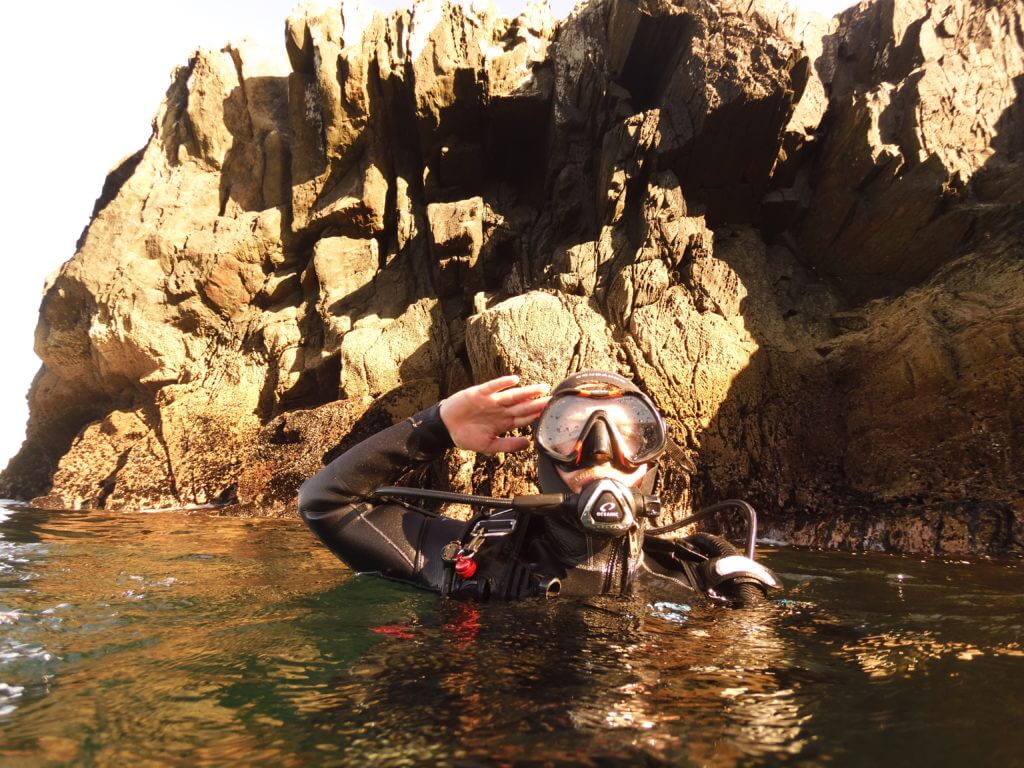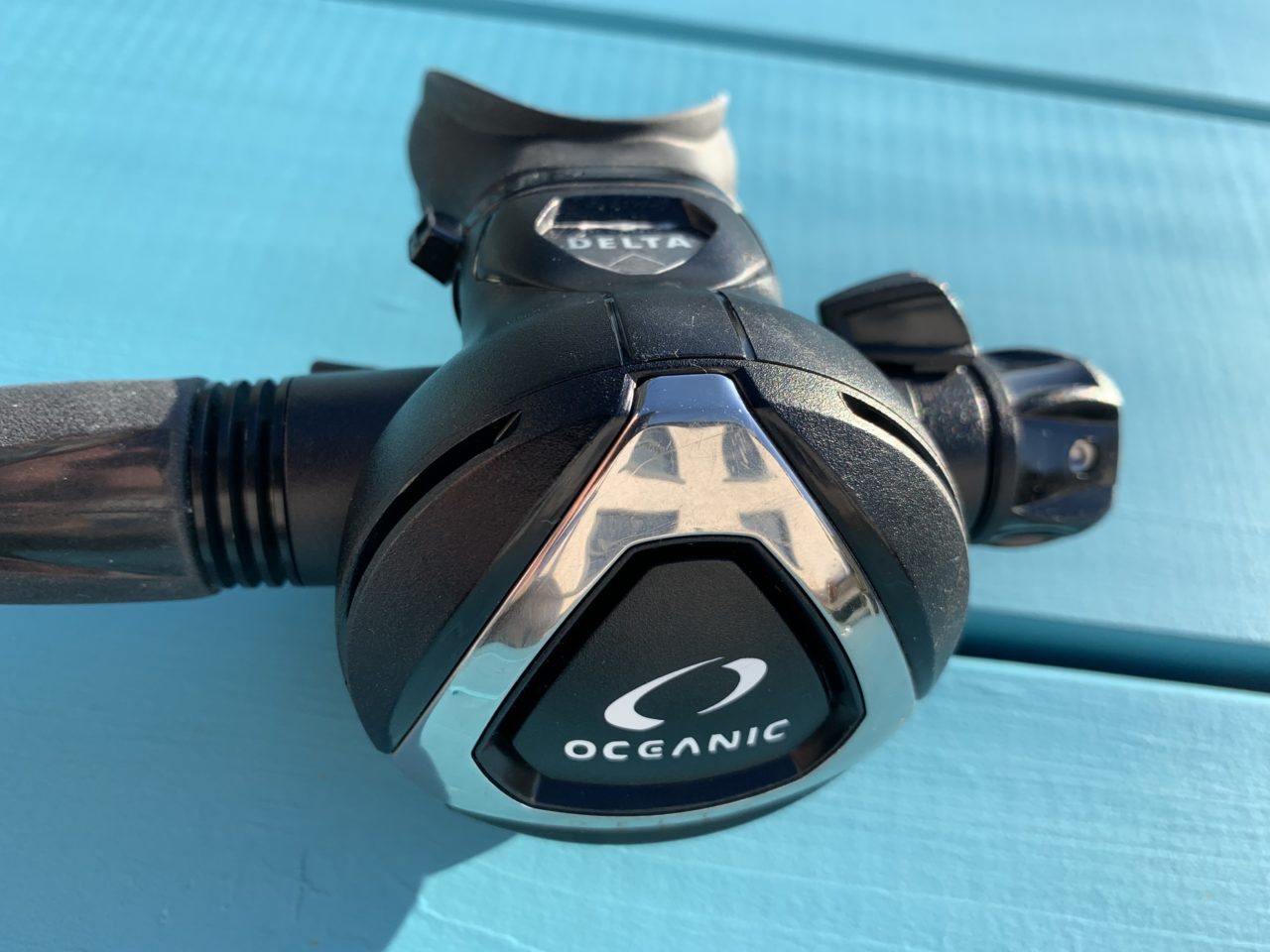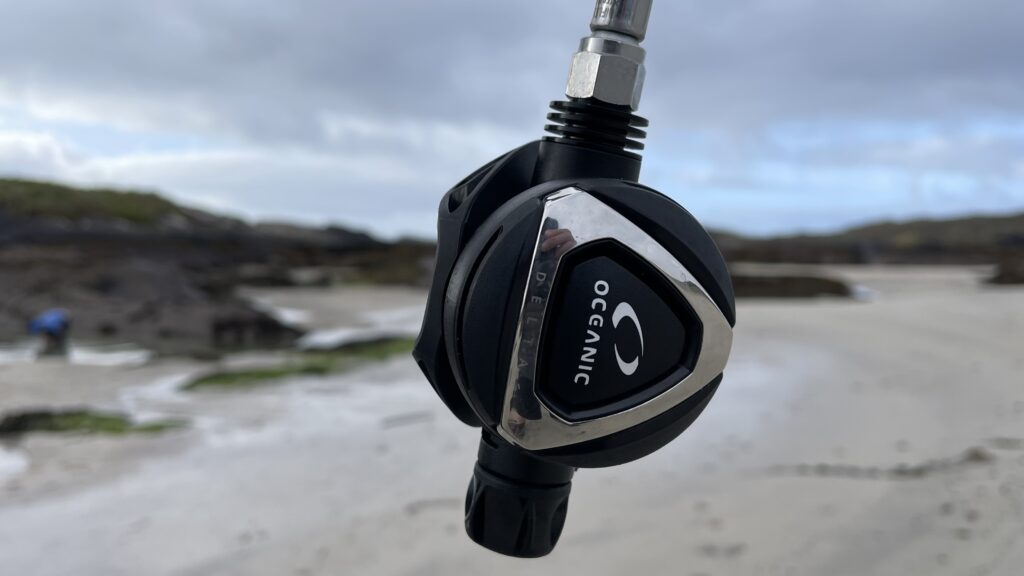
For me, the Oceanic Delta 5 is the best scuba regulator in terms of value for money, performance and aesthetics!
It’s created by Oceanic, whom were established in 1972 and are renowned for creating high-quality scuba diving gear – in particular, they’ve always had a strong focus on creating high performing yet affordable regulators.
The Delta 5 is the latest step in a long line of scuba regulators by Oceanic that’ve been designed to be durable, suitable for all water temperatures and to provide smooth, effortless breathing.
In this review I’m going to explain why I love the Oceanic Delta 5 so much – I’ll list it’s features , pros and cons and describe real-life situations I’ve found it extra useful. Let’s dive in!
PROS:
- Awesome value for money
- Mouthpiece is extra comfortable
- Can adjust airflow
- Distinctive and stylish first stage
- Incredibly durable
- Works in tropical and cold waters
CONS:
- Mouthpiece may seem a little small if you have a huge mouth
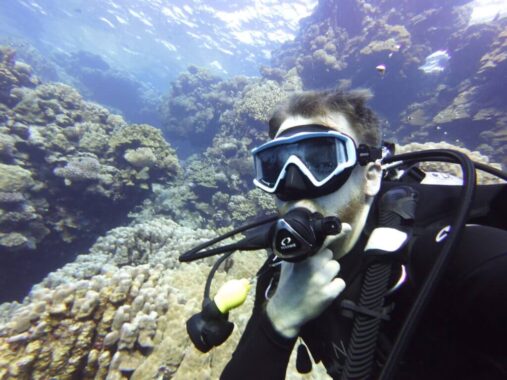
“The Oceanic Delta 5 is instantly recognisable thanks to the shiny metallic triangle around the purge button. Besides making you look awesome, this makes you easy to identify to other divers -which is handy when you’re leading a dive!
I’ve found the mouthpiece to be noticeably softer and more comfortable in my mouth compared to that of other regulators so I don’t get a stiff jaw even when I’m diving a lot.
There’s also a dynamic airflow control dial on the side so you can adjust how easily air is delivered – this is great for ensuring consistent airflow at changing depths as well as making appropriate adjustments for your personal breathing style.
For all these reasons, the Oceanic Delta 5 is my favourite scuba regulator and the one I use most frequently.
Alex: Grand Admiral of the Diving Squad
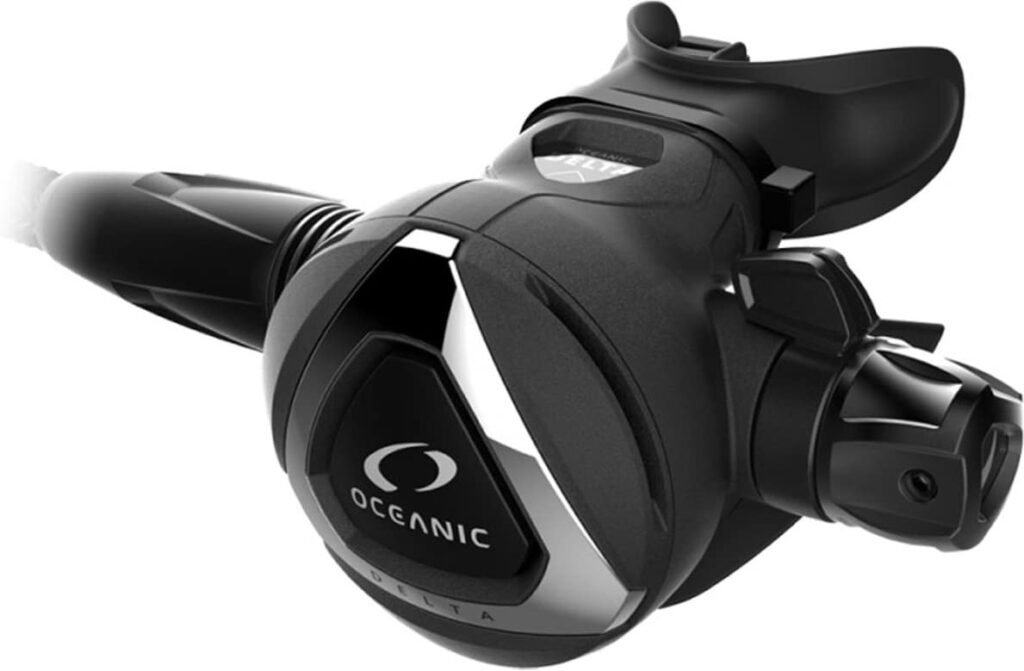
KEY SPECS:
- Environmentally sealed first stage eDX
- Pneumatically balanced valve
- Heat exchanger (enhances cold water performance)
- Dive/ pre-dive switch
- Dynamic airflow control dial
- Nitrox compatible (standard to 40%)
- Dual material orthodontic mouth piece with bite tabs
- Available in black or white
- Available as DIN or Yoke
- 2.5 inch circular diameter
- Pressure Ports: LP 4. HP 2.
- Purge Button
MY REVIEW OF THE OCEANIC DELTA 5:
Straight off the bat, the Oceanic Delta 5 Scuba Regulator is extremely comfortable in my mouth thanks to the dual-material, orthodontic mouth piece which features bite tabs to relax the jaw.
Orthodontic mouth pieces such as this have been specially designed to accommodate for the natural overbite of the mouth.
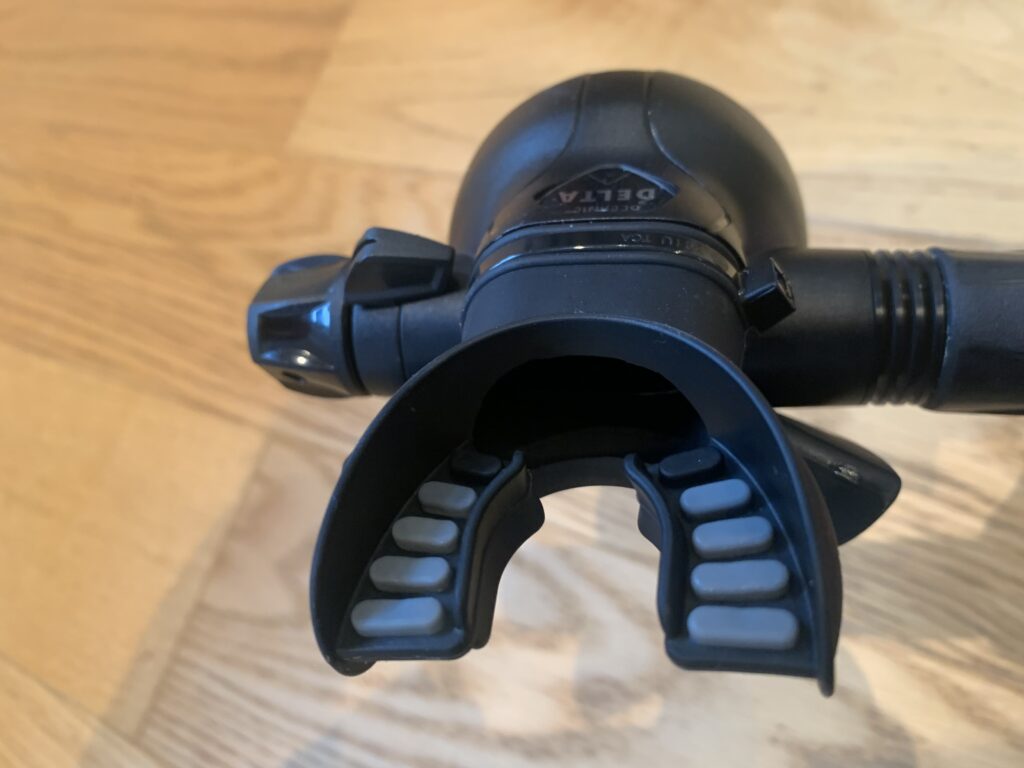
I also found the mouthpiece to be noticeably softer than that of other regulators meaning I don’t get a stiff jaw after using it for days on end such as when I’ve been liveaboard diving.
Some online reviewers have said that the mouthpiece is a little too small for them – they must have pretty huge gobs though, because I did not find this to be the case at all!
Next up, the Delta 5 is an excellent regulator for use in all different water temperatures – it is great for diving in tropical waters and as a cold water regulator.
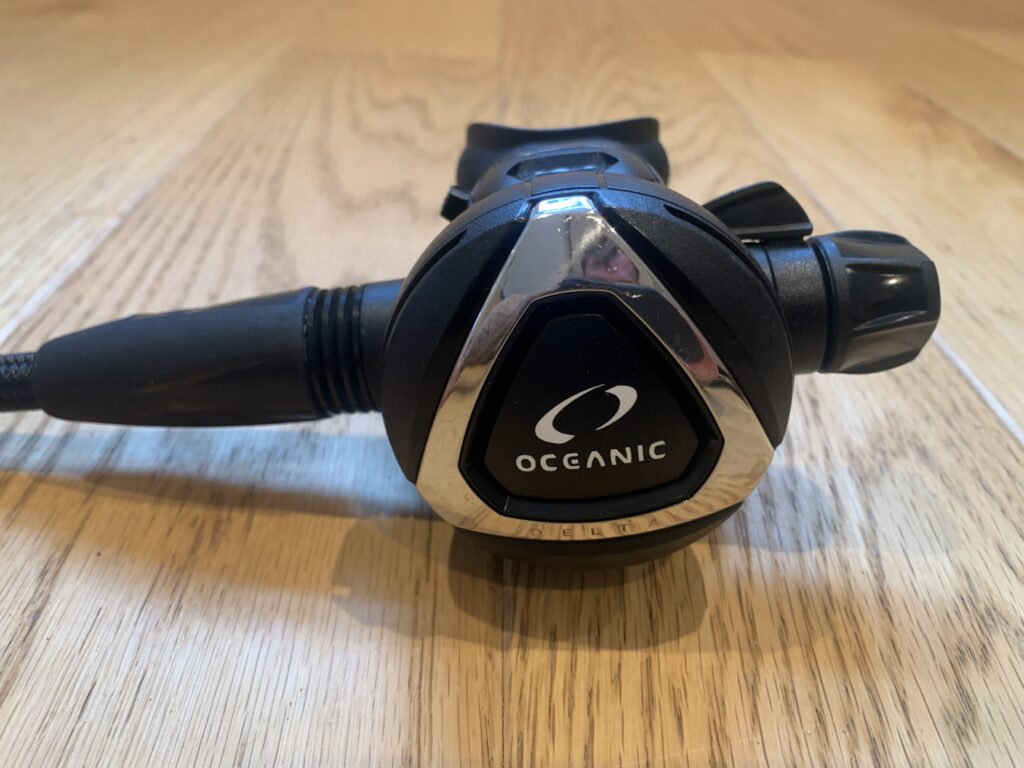
I’ve used mine in places including Egypt and the Maldives where the water temperature can be as high as 28 degrees Celcius – and I’ve also used it in Irish waters with a temperature of just 14 degrees Celcius! It worked great in both conditions.
Generally, scuba regulators don’t require any special features to work in warm water. They do however require modifications to work in cold water – which the Oceanic Delta 5 has: As well as featuring ribbed heat exchangers it also features a heat exchanger positioned on its hose connection port.
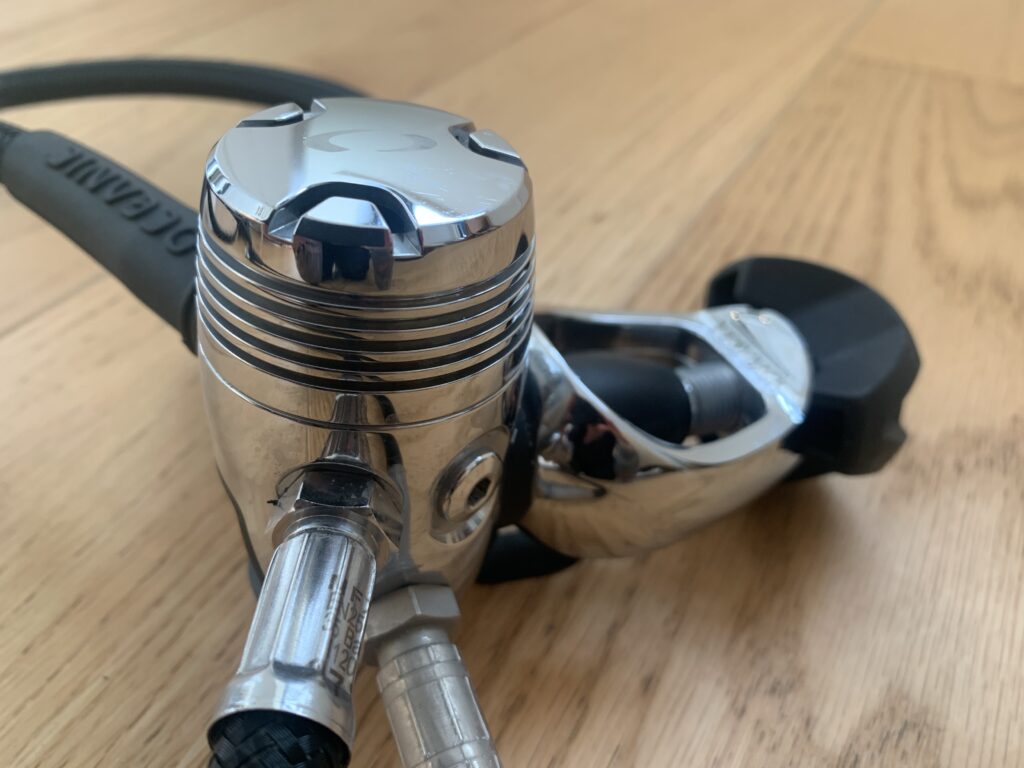
Whilst you can purchase the Oceanic Delta 5 (i.e. the second stage) on it’s own, you can also buy it with the eDX first stage which I recommend as the eDX features an all-metal valve to ensure even better heat transfer and greater all-round durability.
If you do buy the whole package, which I recommend, it’s good to know that like the Deota 5 second stage, the eDX first stage also features ribbed heat exchangers to further enhance cold water use.
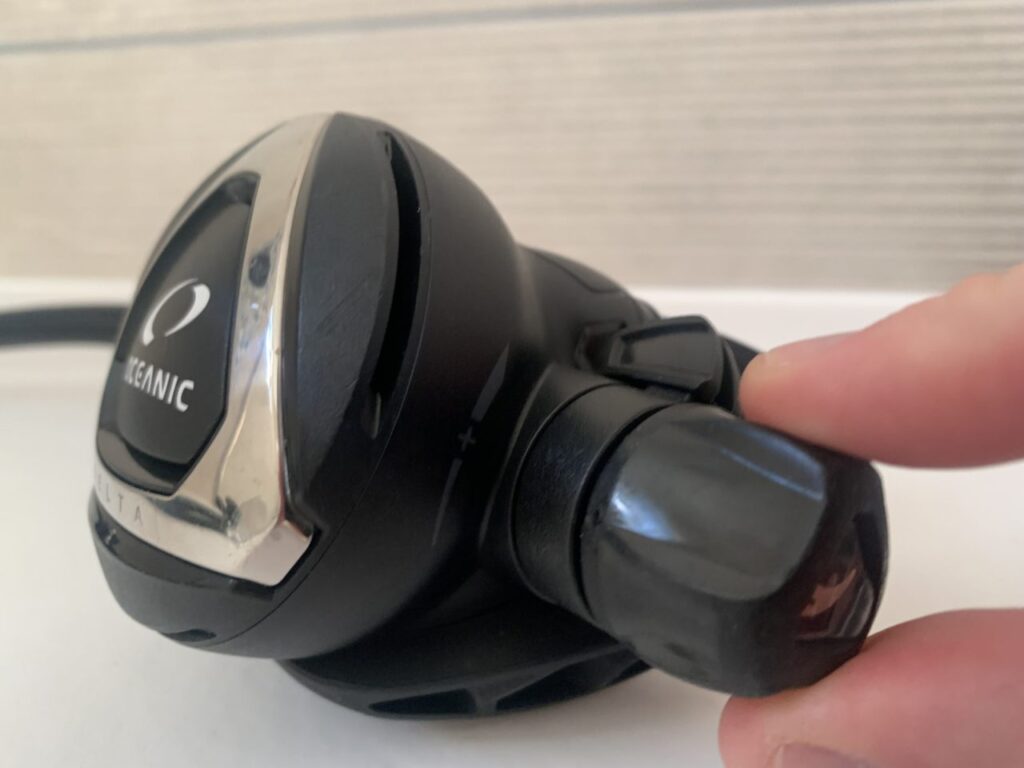
Another incredibly cool feature on the Oceanic Delta 5 – and something you don’t see in cheaper dive regulators is the dynamic airflow adjustment control. Simply turn the dial on the side to increase or decrease airflow.
The advantage of this is that airflow tends to change with pressure. But with an airflow control dial you can ensure it doesn’t by quickly and easily tightening or loosening it.
You can also adjust the airflow dial depending on your own style of breathing – some people are naturally heavier breathers whereas some take faster, more shallow breaths. Whatever is the case for you, you can adjust the airflow of your Delta 5 to suit your breathing style best and so conserve air.
Whew! That’s a lot of awesome features and functionalities we’ve covered there. Time to sum up the Oceanic 5 Scuba Regulator:
FINAL VERDICT:
It’s stylish, it’s durable, it has a supremely comfortable mouthpiece…it’s airflow is adjustable – it works superbly well in all water temperatures and yet despite all of these things the Oceanic Delta 5 Regulator is only mid-priced!
To tell the truth, I’m not entirely sure how it’s such a modest price – it really feels, looks and performs like a luxury end scuba regulator; but I’m certainly not complaining.
Like I say, you can buy the Oceanic Delta 5 second stage on it’s own or you can buy it with the Oceanic eDX first stage (as DIN or YOKE) which I would recommend as they were both made to go together.
Either way, this is an excellent scuba diving regulator – Oceanic have done it again at creating a product that oozes high quality but won’t break the bank.
Ever since purchasing my Oceanic Delta 5 (which I bought with the eDX first stage), I’ve loved using it and have even found that my air consumption has improved somewhat, which I believe is thanks to the reduced strain it places on my jaw and being able to adjust the air flow.
